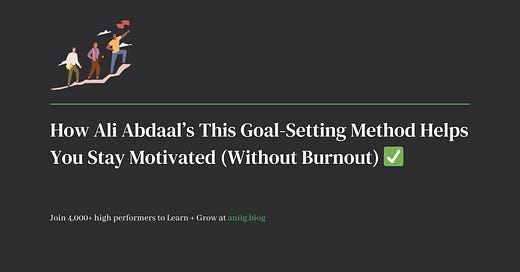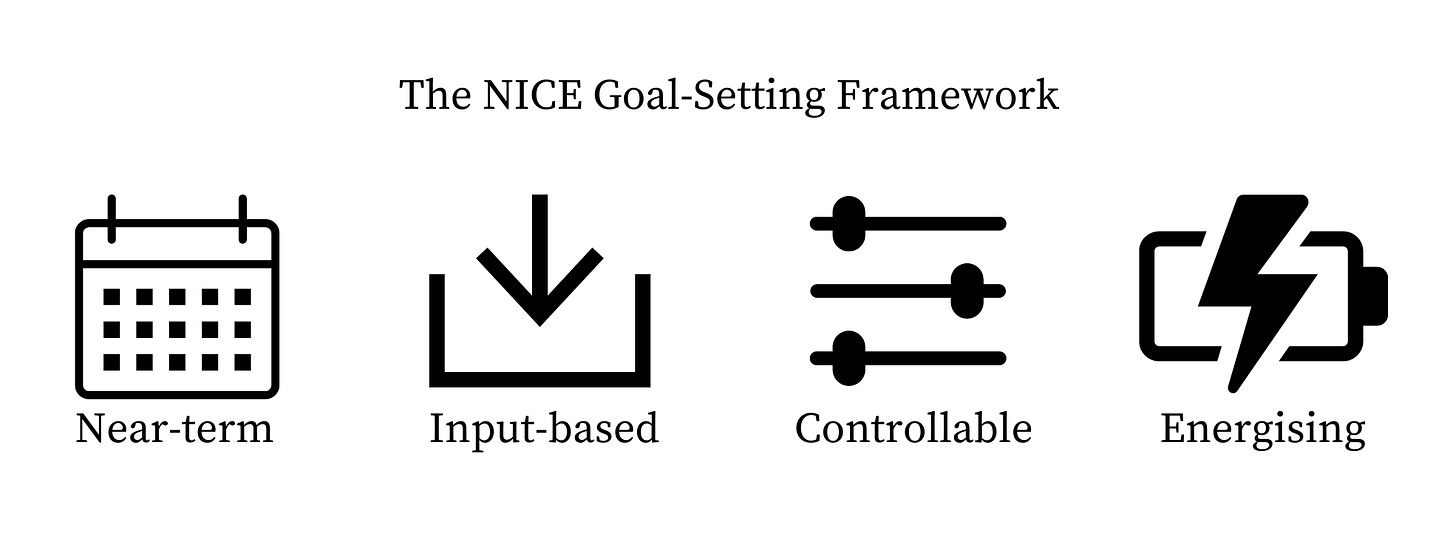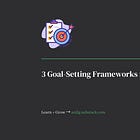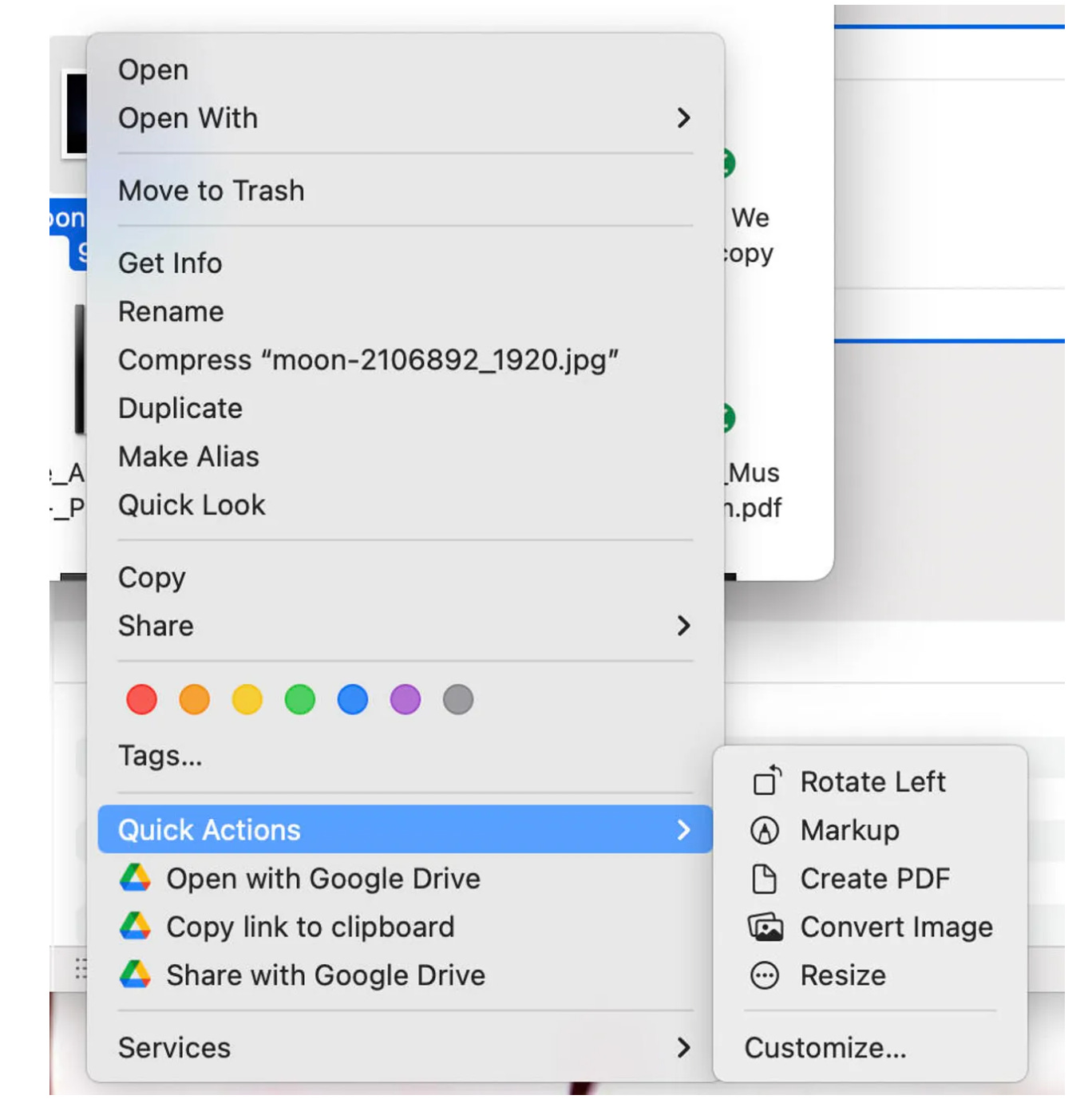How Ali Abdaal’s This Goal-Setting Method Helps You Stay Motivated (Without Burnout) ✅
Issue #117: NICE Goals. Simple MacOS Productivity Hack. 3 Rewards of Mastery.
Welcome to Learn + Grow, where you will learn tips and tools that will help you be 3% more peaceful + productive in just 3 minutes a week.
💡 Here are 3-ideas to help you learn, grow, and be inspired this week!
🎓 Learn
Hey friends,
The first month of 2025 comes to an end.
But it’s still a good time to do some yearly planning when motivation is still high and we’re all hyped about yearly goal setting.
So, before the excitement fades and life takes over, I want to share a simple method that might just help you set feel-good goals—the kind that keep you moving forward without making you miserable.
The Problem with Goal-Setting
There are a million goal-setting frameworks out there:
SMART Goals (Specific, Measurable, Achievable… blah blah blah)
HARD Goals (Heartfelt, Animated, Required, Difficult—because easy goals don’t inspire action.)
WOOP Goals (Wish, Outcome, Obstacle, Plan—turning dreams into reality, minus the fluff.)
OKRs (Objectives and Key Results—great for teams, but can work for individuals too.)
BHAGs (Big Hairy Audacious Goals—because sometimes, you just need to dream ridiculously big.)
And guess what?
They all work—and they all don’t.
Why?
Because it’s not the method. It’s the mindset.
Most people fail at goals because they blindly follow a system that isn’t right for them. What works for me might not work for you. And what worked for you last year might not work this year.
So, here’s the real game: experiment.
Try different methods. Test what sticks. Adjust as needed. Make it yours.
I recently revisited my highlights from Ali Abdaal’s book, Feel-Good Productivity.
Buried in those pages was a goal-setting method that made me pause.
Simple. Practical. Refreshing.
And best of all—it focuses on feeling good while you chase your goals.
Ali puts it like this:
“My preferred method doesn’t involve fixating on an external outcome or destination, but instead emphasizes the feel-good journey.”
Let’s break it down.
The NICE Goal-Setting Framework
Most traditional goal-setting methods focus on big, long-term outcomes.
And while that sounds great in theory, it often leads to overwhelm, procrastination, and burnout.
NICE goals work differently.
They focus on momentum over perfection, effort over outcome, and sustainability over intensity.
Here’s why each part of the framework is effective:
1. Near-Term: Focus on What’s Next, Not What’s Far Away
Setting a five-year goal sounds inspiring—until you realize you have no idea what to do today.
NICE goals keep the timeline short and actionable.
Instead of "Run a marathon in a year," go with "Run 2 miles this week."
Instead of "Become fluent in Spanish," start with "Learn five new words today."
The brain loves quick wins. When you complete small, near-term goals, you build confidence and motivation to keep going.
2. Input-Based: Focus on What You Can Do, Not Just What You Want
Most people set output-based goals—the kind that focuses on results.
“Lose 20 pounds.”
“Earn $100K.”
“Write a bestseller.”
But results aren’t fully in your control.
Inputs, however, are.
That’s why NICE goals shift the focus to your actions.
Instead of "Lose 20 pounds," go with "Exercise for 30 minutes daily."
Instead of "Hit $100K revenue," go with "Make 5 sales calls per day."
Instead of "Write a bestseller," go with "Write 100 words every morning."
When you focus on what you control, you take consistent action without obsessing over unpredictable outcomes.
3. Controllable: Remove Unrealistic Pressure
Ever set a goal so big that you gave up before starting?
That’s what happens when your goals rely on things outside your control.
NICE goals are about realistic commitments.
"Read for 8 hours a day" = NOT realistic.
"Read for 20 minutes daily" = Feels doable.
By making goals manageable, you stay consistent. And consistency beats intensity every time.
4. Energizing: If It Drains You, It’s Not the Right Goal
A goal should make you feel excited, not exhausted.
If just thinking about your goal makes you feel stressed, it’s probably:
Too big
Too vague
Something you don’t actually want
The trick? Choose goals that align with your natural energy.
Hate running? Swap "Run every morning" with "Do fun cardio workouts."
Feel drained by strict writing schedules? Swap "Write 1,000 words daily" with "Jot down ideas every morning."
A goal that excites you is a goal you’ll stick with.
The Takeaway
Goals shouldn’t feel like a punishment.
They should pull you forward, not weigh you down.
So, try this:
Set one NICE goal for the next week. Just one.
Something small, controllable, and energizing.
And then?
Enjoy the process.
(And hey, if it doesn’t work, blame Ali Abdaal.) haha!!
Let me know what goal you’re setting! 🚀
…and if you want to learn (and experiment with) more goal-setting methods, here are my (other) three favorite frameworks I shared last year.
🚀 Growth Tip
I’ve been using a Mac for over 16 years, and just last year, I discovered a hidden gem: Quick Actions.
This simple but powerful feature has saved me tons of time—whether I’m converting images, rotating them, removing backgrounds, creating PDFs, or merging multiple PDFs instantly.
Here’s how to use it and boost your productivity:
How to Use Quick Actions:
Right-click any file on your Mac.
Select “Quick Actions” from the context menu.
Choose from the available options like Rotate, Markup, Create PDF, and more.
🤩 Inspiration
3 Rewards of Mastery
Robin Sharma—author of The 5AM Club and The Monk Who Sold His Ferrari—talks about 3 powerful rewards that come with MASTERY.
They’re simple, but they can change the way you approach growth.
Reward #1: Income. Help more people. Solve more problems. That’s how you earn more. Money is a by-product of value created.
Reward #2: Influence. Mastery brings recognition and trust. When you consistently show up with focus and expertise, people listen. Influence grows—and so does your impact.
Reward #3: Freedom. As income grows and influence expands, so does your freedom. The freedom to work on what excites you, travel when you want, and live life on your terms.
Mastery leads to possibilities.
Keep leveling up. It’s worth it.
[On a different note, here’s something I’m excited to share to help you boost your productivity and performance through better writing in 2025]
How Samir, an Engineer, Transformed His Career with One Skill
Samir wasn’t a writer. He was a software engineer, great at building things but struggled when it came to explaining ideas, pitching projects, or sharing updates.
After being passed over for a promotion, he realized something: It wasn’t his technical skills holding him back—it was his writing.
He signed up for a copywriting course, thinking it would help him write better emails. (It did that and more.)
In a few months, Samir’s emails were clear and persuasive. His project proposals got approved faster. He became the go-to person for internal presentations. And, yes—he finally got that promotion.
Why? Because writing is a meta-skill.
Whether you’re an engineer, designer, accountant, or manager, writing impacts everything. Emails, reports, pitches, presentations—good writing makes you more productive, more effective, and more valuable.
Here’s the good news: WRITING IS A SKILL. You don’t “have it”, you learn it.
If you can improve only one skill in 2025, make it writing.
I’ve spent over $5,000 on different writing courses, and out of all of them, I highly recommend CopyThat—an email-based copywriting course you can complete in just 30 minutes a day for 10 days.
✍🏻 Check it out here: CopyThat
🪴 Missed Last Issue?
In the last issue of Learn + Grow, I shared “38 Bitesize Powerful Life Lessons I Learned in 2024”
This practice of collecting life wisdom started as a personal habit—capturing the moments and lessons that truly shaped me.
But there’s a deeper reason behind it:
Someday, I want to turn these insights into a small book. A book I can hand down to my kids, so they’ll have a piece of my journey, guiding them long after I’m gone.
👋 Until next time, Anil / CEO and Co-Founder of Multidots, Multicollab, and Dotstore.
May the Peaceful Growth be with you! 🪴
More Ways to Learn + Grow
#1: Are you a founder (or dreaming of becoming one)? If you want actionable strategies to scale your agency to $5M, give Peaceful Growth a read.
#2: Work with WordPress or build on it? Check out WP for Enterprises —your backstage pass to how BILLION-DOLLAR websites run.
#3: I’ve sat down with founders who’ve grown their businesses from $500K to $10M. Want their playbook? Listen to the Peaceful Growth Podcast for insider tips on scaling up.











THANK YOU SIR!
Very helpful for defining goals.